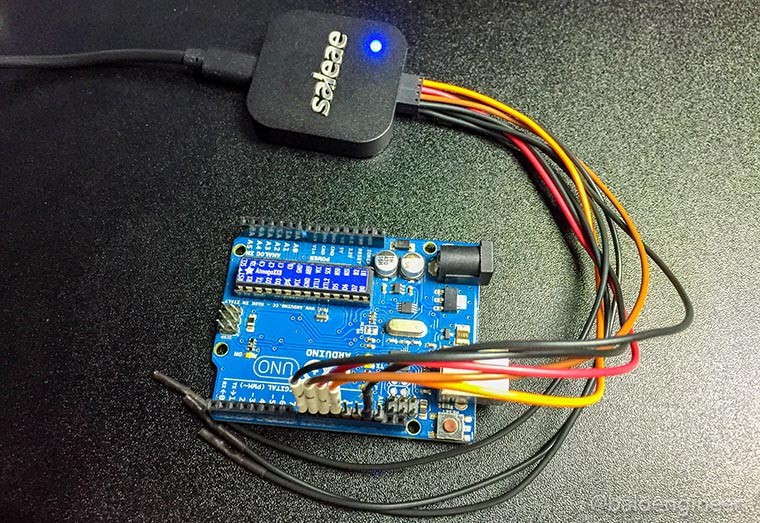The standard digitalRead and digitalWrite commands turn off the cycling of the timer every time they are used. I agree, it's a good trade-off. It will happily use the too-large pin number as an index to an array, reading whatever happens to be in memory after those tables, and use that data as a pointer and bitmask to write to someplace in memory! At the time, David seemed interested to include them in Arduino. With this macro version, if an illegal pin number is used, it will write to the last pin. I think maybe it's time to turn off my notifications for this thread 
| Uploader: | Gardajora |
| Date Added: | 24 October 2014 |
| File Size: | 66.94 Mb |
| Operating Systems: | Windows NT/2000/XP/2003/2003/7/8/10 MacOS 10/X |
| Downloads: | 28546 |
| Price: | Free* [*Free Regsitration Required] |
Paul doesn't advertise that he's not only implemented THESE ideas as part of the digitalWrite etc commands there but he's ALSO greatly speeded up the way digitalWrite etc work when the pin number is not known at compile time.
If the pin number is not known at compile time, it defaults to use the slower digitalWrite command.
If you need to manipulate several adjacent pins at once you may be able to do it with one command and get another performance increase; learning to use those commands may also move you closer to learning the commands to get better control over the PWM pins for finer control of those.
I'm certainly not going to put any more effort into it now, other than pointing out this lack of checking for illegal pin number input.
Sign up using Facebook. How do we handle problem users? This would mean about 30 pins needed for the SRAM only.
Subscribe to RSS
I thought the digitalWriteFast2, pinModeFast2 version was preferable. I think that is Paul's point. The port manipulation commands control the same pins but refer to them in a completely different syntax and depend on specific details of the pin being known at the time the program is written. By using our site, you acknowledge that you have read and understand our Cookie PolicyPrivacy Policyand our Terms of Service.

As I said before he did all the hard work on this. Post as a guest Name. I found out I made a stupid mistake and the library was not used.
Hope it gets some use.
Google Code Archive - Long-term storage for Google Code Project Hosting.
The slow compiled code often requires almost that many instructions just to marshal arduio inputs into the required registers, when digitawritefast isn't a compile time const. I looked at what he had done and thought it needed just a little more work to make it a valuable library 'routine'--I put digitalritefast in quotes because there's no. If someone wants to save program space, they can call digitalWrite directly. I haven't even gotten so far as to solder in headers, but I looked at some of the software that comes with the board to tie it to the Arduino IDE.
For non-PWM pins, five machine instructions are generated. Where does all that extra MPU cycle usage come from? I just tried to time digitalWrite against direct port access with the following code:. In this program, the correct value for overhead can only be determined by examining the generated assembly. It would be wise if people with other Arduinos would test those boards.
Port Manipulation and Arduino’s digitalWrite Performance – Timo Denk's Blog
In many situations this will be both faster and also smaller. I extended it to include pinModeFast and with diigitalwritefast huge amount of assistance from Westfw digitalReadFast.
Inside Teensyduino, I implemented this using a giant chain of if-else checks, where each performs the arduio write. Lastly, there is the likelihood that you will use one of these 'Fast' commands in a way that means the pin number is not known at compile time.
Trust me, it is real. Any problems are due to my shortcomings, not theirs.
As beginners get more experience they move toward the more efficient port manipulation commands see http: On the other hand, the point of these library macros is to improve efficiency. However, the end result for using this RAM chip with enough speed is to either change the shift register to a faster one or remove the shift registers digitalwritecast all. It might be hard to find that issue.
The best answers are voted up and rise to the top. Like the port manipulation commands it is much faster than digitalWrite over ten times faster and the extra speed depends on knowing the pin numbers at compile time--it won't speed things up if dgiitalwritefast inside a subroutine or loop where the pin number is going to change.
It uses the simple syntax of the digitalWrite type commands, which makes digitalwriteafst attractive to beginners, and perhaps less error prone even to programmers who are a little more experienced.


No comments:
Post a Comment